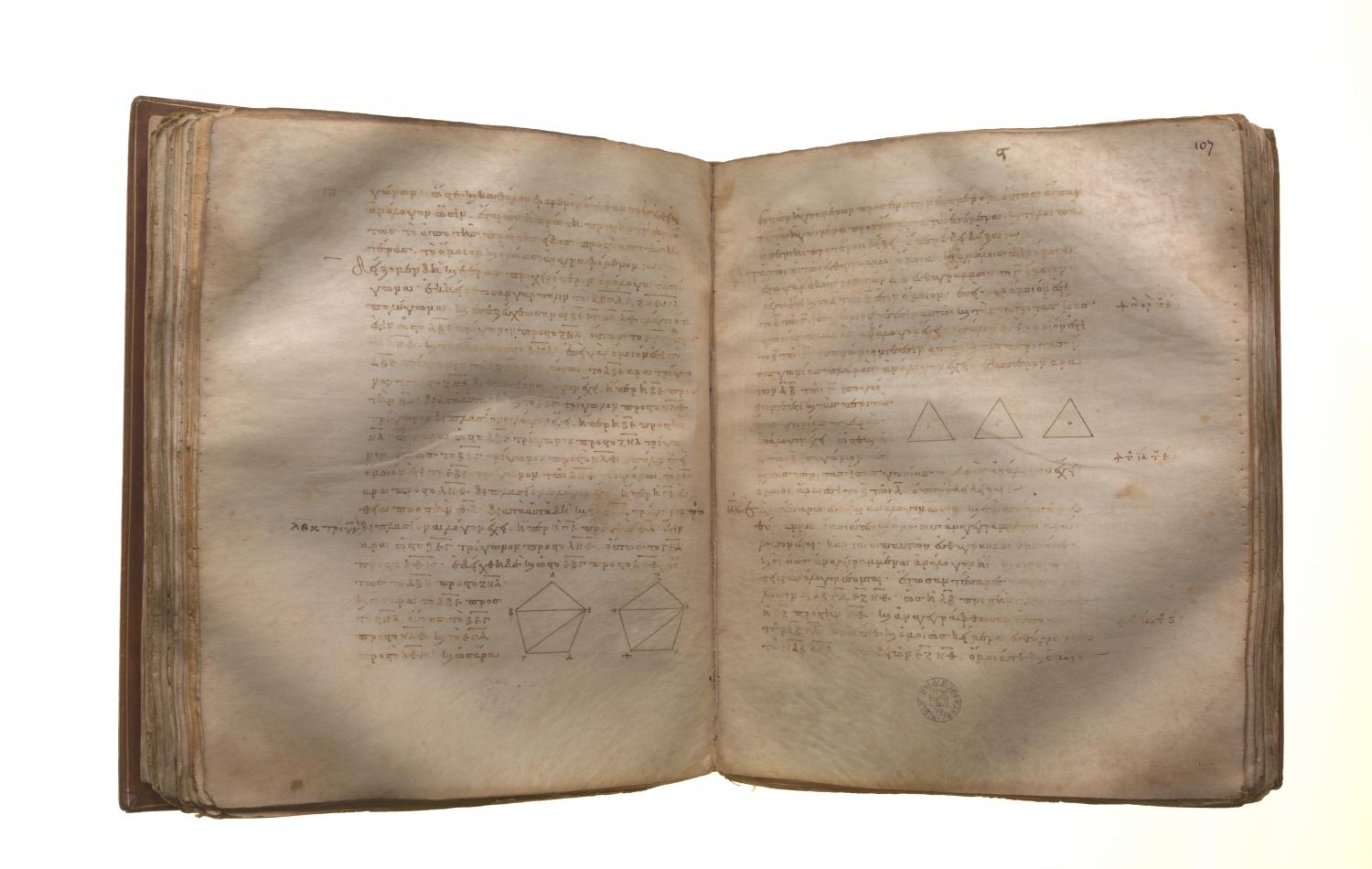Translations
Τὰ τῷ αὐτῷ εὐθυγράμμῳ ὅμοια καὶ ἀλλήλοις ἐστὶν ὅμοια. Ἔστω γὰρ ἑκάτερον τῶν Α, Β εὐθυγράμμων τῷ Γ ὅμοιον: λέγω, ὅτι καὶ τὸ Α τῷ Β ἐστιν ὅμοιον. Ἐπεὶ γὰρ ὅμοιόν ἐστι τὸ Α τῷ Γ, ἰσογώνιόν τέ ἐστιν αὐτῷ καὶ τὰς περὶ τὰς ἴσας γωνίας πλευρὰς ἀνάλογον ἔχει. πάλιν, ἐπεὶ ὅμοιόν ἐστι τὸ Β τῷ Γ, ἰσογώνιόν τέ ἐστιν αὐτῷ καὶ τὰς περὶ τὰς ἴσας γωνίας πλευρὰς ἀνάλογον ἔχει. ἑκάτερον ἄρα τῶν Α, Β τῷ Γ ἰσογώνιόν τέ ἐστι καὶ τὰς περὶ τὰς ἴσας γωνίας πλευρὰς ἀνάλογον ἔχει [ὥστε καὶ τὸ Α τῷ Β ἰσογώνιόν τέ ἐστι καὶ τὰς περὶ τὰς ἴσας γωνίας πλευρὰς ἀνάλογον ἔχει]. ὅμοιον ἄρα ἐστὶ τὸ Α τῷ Β: ὅπερ ἔδει δεῖξαι.
Figures which are similar to the same rectilineal figure are also similar to one another. For let each of the rectilineal figures A, B be similar to C; I say that A is also similar to B. For, since A is similar to C, it is equiangular with it and has the sides about the equal angles proportional. [VI. Def. 1] Again, since B is similar to C, it is equiangular with it and has the sides about the equal angles proportional.
